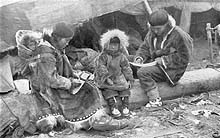| Magazine Home I Links I Contact Us |
|
Home |
Facts About Visual MemoryMemory is the retention of information over time. Visual memory is a person's ability to remember what he has seen. Most Learning-Disabled Students Have Visual Memory Deficits Most learning-disabled students have serious deficiencies in the area of visual memory, states Addie Cusimano in her book Learning Disabilities: There is a Cure. "Visual memory involves the ability to store and retrieve previously experienced visual sensations and perceptions when the stimuli that originally evoked them are no longer present. That is, the student must be capable of making a vivid visual image in his mind of the stimulus, such as a word, and once that stimulus is removed, to be able to visualize or recall this image without help. Various researchers have stated that as much as eighty percent of all learning takes place through the eye with visual memory existing as a crucial aspect of learning. "Children who have not developed their visual memory skills cannot readily reproduce a sequence of visual stimuli. They frequently experience difficulty in remembering the overall visual appearance of words or the letter sequence of words for reading and spelling. They may remember the letters of a word but often cannot remember their order, or they may know the initial letter and configuration of the word without having absorbed the details, that is, the subsequent letters of the word. As a result, these students fail to develop a good sight vocabulary and frequently experience serious writing and spelling difficulties." Visual memory is also significantly related to mathematics achievement, according to a study by Meghan E. Geiger et al. Village Eskimo Children Have Superb Visual Memory 
A test of visual memory was given to 501 urban Caucasian and 125 village Eskimo children. Village Eskimo children demonstrated significantly higher levels of visual memory. Visual memory was also found to increase significantly with age. In contrast to the striking visual differences of the urban environment, the Arctic is a world of visual uniformity. The flat, monotonous tundra and piled sea ice provide few distinctive visual markers to guide the hunting on which survival in part depends. In order to hunt and find their way back to the village, the Eskimo must attend to very small visual cues and their patterned relationships such as upturned rocks or the angle of the Big Dipper at different times of the day. Caucasians who have traveled with the Eskimo frequently remark upon their extraordinary ability to travel through what seems to be a featureless terrain by closely observing the smallest landmarks and memorizing their spatial locations.
|
| Home A B C D E F G H I J K L M N O P Q R S T U V W X Y Z |